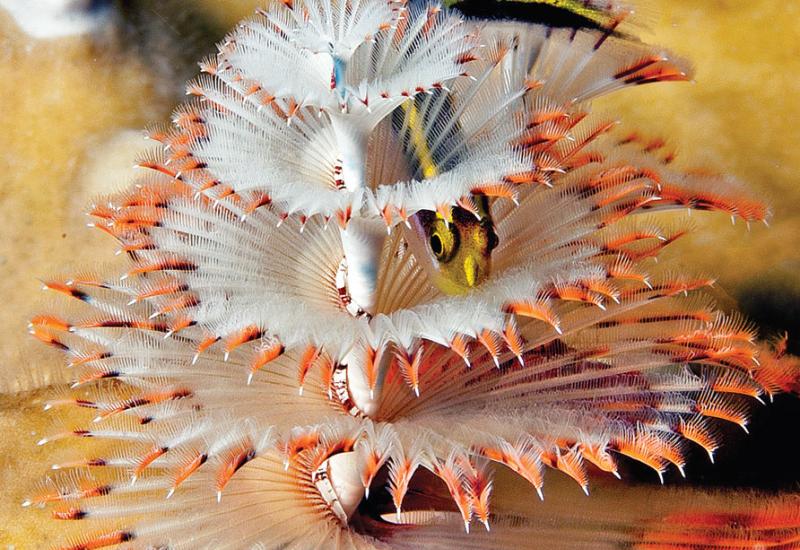Critter Hunt - Cleaner Wrasse
Imagine an unending infestation of ticks — a 24-hour onslaught, by the dozens, feasting on blood until ready to pop before settling back to the seafloor to molt. Alas, such is the fate of many reef fish plagued by parasites.
To safeguard their health and, more than likely, their sanity, infected “client” fish spend an inordinate amount of time having parasites — for the most part, the larval stage of isopods — plucked from their bodies by certain species of fish and shrimp that make a good living for their housekeeping efforts. As an additional reward, these cleaners are granted amnesty from predation, even daring to dart inside the gaping mouth of a grouper to nab a tasty tidbit.
It has only been during this past decade that University of Queensland researchers have begun to sort out the intricacies of this win-win relationship, and their findings are dramatic. Most amazing are the numbers. During the day, a single bluestripe cleaner wrasse, Labroides dimidiatus, may inspect as many as 2,300 fish, removing about 1,200 parasites in the process. Recent studies show that it takes the mobile, one- to three-mm-long larvae about an hour or less to suck down their fill. Such rapid turnover explains for the first time why clients make brief, but frequent, visits to cleaning stations. At the extreme, one rabbitfish visited a site 144 times.
The next time you visit a reef, take a moment and observe the workings of a cleaning station with a better understanding of what all the fuss is about.
Imagine an unending infestation of ticks — a 24-hour onslaught, by the dozens, feasting on blood until ready to pop before settling back to the seafloor to molt. Alas, such is the fate of many reef fish plagued by parasites.
To safeguard their health and, more than likely, their sanity, infected “client” fish spend an inordinate amount of time having parasites — for the most part, the larval stage of isopods — plucked from their bodies by certain species of fish and shrimp that make a good living for their housekeeping efforts. As an additional reward, these cleaners are granted amnesty from predation, even daring to dart inside the gaping mouth of a grouper to nab a tasty tidbit.
It has only been during this past decade that University of Queensland researchers have begun to sort out the intricacies of this win-win relationship, and their findings are dramatic. Most amazing are the numbers. During the day, a single bluestripe cleaner wrasse, Labroides dimidiatus, may inspect as many as 2,300 fish, removing about 1,200 parasites in the process. Recent studies show that it takes the mobile, one- to three-mm-long larvae about an hour or less to suck down their fill. Such rapid turnover explains for the first time why clients make brief, but frequent, visits to cleaning stations. At the extreme, one rabbitfish visited a site 144 times.
The next time you visit a reef, take a moment and observe the workings of a cleaning station with a better understanding of what all the fuss is about.










